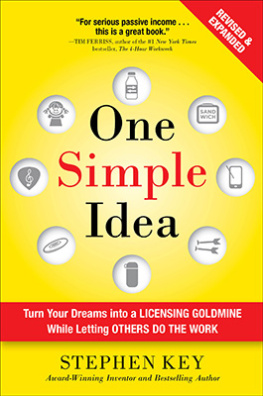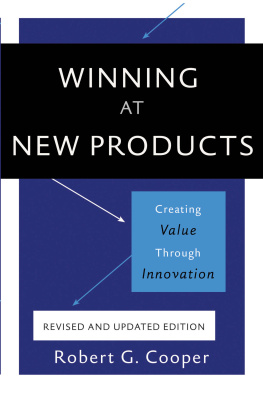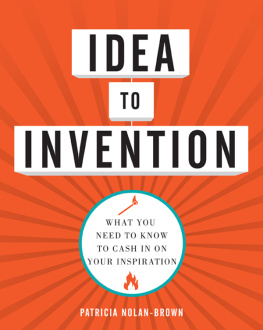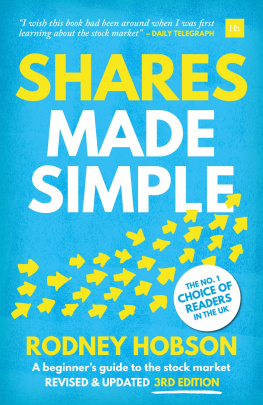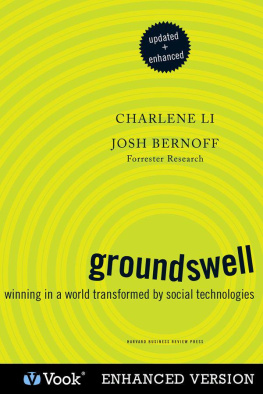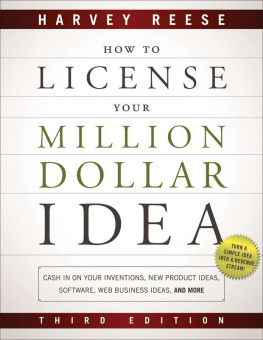If you enjoyed this book, discover your next great read with the following excerpt.
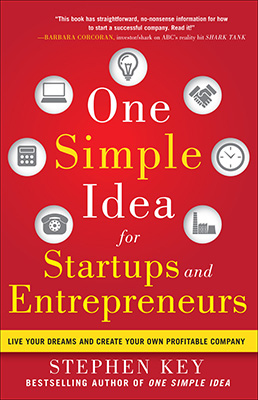
1
Opportunities for Inventor-Entrepreneurs in the Twenty-First Century
THIS IS a fantastic time to be creating new products and bringing them to market yourself!
The opportunities for simple ideas that offer clear benefits to the consumer are endless. Consumer spending accounts for 60 to 70 percent of the U.S. economy, even during economic slumps, and 40 percent of consumer spending is discretionarydriven by desire, not necessity. Dreaming up ideas for consumer products can be a lot of fun. But your simple idea doesnt have to be for a consumer product. It can be for something purchased and used by businesses, governments, scientists, institutions (schools, hospitals, etc.), public service organizations (police, fire, waste management, etc.), and so on.
Even during economic downturns, there are opportunities for innovation. When the economy is poor, the most popular products tend to be those that enable people to stretch their resources (such as squeezing the last bit of toothpaste out of the tube), provide inexpensive comfort or enjoyment, and improve the quality of life without breaking the budget. As I write this, our economic situation is not great, but some markets are strong. For example, the pet and home-improvement industries are both growing by approximately 5 percent a year, and the kitchen industry is on fire because people are staying home to cook.
Regardless of whether the economy is booming or busting, consumers are always open to products that make their lives easier or more enjoyable. You just need to know where to look for them and how to recognize them.
There are also lots of tools and resources available that make it easier than ever to start and grow a business. With the Internet and communication technologies, such as Skype, you can work out of your home rather than locate the business elsewhere. You dont have to sell your product only through brick-and-mortar stores; you can sell it online, too. The Internet enables you to study the market and find most of the information you need. Social media networks allow you to connect with like-minded people who can help you with your business. You can use your website, blogs, social media networks, e-mail, and other online tools to build your brand and communicate with customers and vendors.
All these tools make it easier for anyone to compete in the big leagues. You can get closer to and be more responsive to the market. You can bring products to market faster, seizing market opportunities the heavy hitters miss or dont want to bother with. You can provide a level of personalized customer service that most large companies dont care to do.
All of these things can be done from your desk, with just your telephone and computerno fancy office or employees needed. Everything can be outsourced, from creating a technical drawing of your idea to manufacturing your product, designing your logo, and doing your bookkeeping! You can tap into creative ways to fund your business, too.
All the information, resources, and tools you need to successfully launch a small business and bring a simple idea to market yourself are out there. You just need a road map to show you how to find them, use them, and get from here to there. Thats what this book is all about.
My Journey
During the 35 years Ive been bringing simple ideas to market, Ive done more than just license my products. Ive also worked for a startup company where I helped bring other peoples ideas to market, and Ive started a business to bring my own ideas to marketnot once, but twice. In fact, thats how I began this journey, so lets start at the beginning.
In the mid-1970s, I was a freshman at Santa Clara University majoring in economics and hating everything about it. I felt overwhelmed and needed to try something different. So I took an art class and fell in love with working with my hands. One day, I went home and told my dad I wanted to be an artist.
Thats fantastic, Steve! he said. Do you draw?
No.
Do you paint?
No.
Dad sighed and studied me for a long minute. Then, he said, Find your passion, Steve. Then do it, and youll never work a day in your life. It was the best advice he ever gave me.
I transferred to San Jose State University because it had a huge art department, and I changed my major to art. That wasnt the right fit for me, either, because I was creative but not a fine artist. When I left college three years later, I didnt know what I was going to do. I didnt think I had the skills to get a job. I had to find a way to earn a living, so I started to make things.
I made t-shirts with funny sayings on them and ran advertisements in the back of national magazines to try to sell them, but I didnt have much luck. I added funny hats with adjustable fingers in the back that you could bend into a peace sign, okay sign, or other symbols, but I didnt have much luck selling them either. I didnt give up, though, and began making soft sculptures (stuffed animals and characters). I would come up with ideas, source the materials from local fabric stores, handmake the products, and sell them at arts and crafts fairs up and down the state of California.
Ill never forget my first show. It was a small art-and-crafts festival in the Santa Cruz Mountains. It seemed like a big deal to me at the time, but it was actually just a bunch of tables and handmade booths set up in the playground of an elementary school. I was sitting there at my little table covered with my Softies when my dad showed up.
Howre you doing? he asked.
Fantastic!
Good! he said. How many products have you sold?
I hadnt sold any. But I loved it, stayed with it, and learned from it. One of the best lessons I learned very quickly was that if I was going to eat and pay my rent, I had to come up with ideas people loved. If a product didnt sell, I had to immediately replace it with one that did. The experience taught me to be agile: quick to realize and respond to what customers did and didnt like. I spent about six years designing, making, and selling my stuff at street fairs, loving every aspect of that little world.
Unfortunately, everyone (and I mean everyone) thought I was a loser. I could see the question in their faces: What are you doing with your life? Youre 25 and selling things on the street? Besides, I wanted more for myself and my ideas. I thought, If I can sell my little products at street fairs, why not in local stores? And if I can sell my products in local stores, why not in big stores all over the country? Why not all over the world? I wanted to see my products everywhere!
One day, I loaded up my partner Marlenas Mustang with a crate of our products, a series of soft-sculpture vegetables with smiling faces wed made out of colored nylons we purchased at a local department store. I drove to downtown Los Gatos, where there were a lot of novelty stores. I found one that seemed perfect: Puttin on the Ritz. The owner, Marilyn Hart, was very kind. She treated me with respect, even though I didnt have a clue what I was doing, and she let me show her my products, even though they werent right for her store. Then she gave me a mini-lesson in retail pricingexplaining how a store would keystone my product (mark it up)and some other advice before sending me on my way, without an order but inspired to keep trying.
Two more stores turned me down, and although I was discouraged, it wasnt enough to make me stop. I went to the Rainbow Inn at the Pacific Garden Mall in Santa Cruz, a store I had frequented as a customer and knew had a lot of soft sculpture. I hauled in my crate and was trying, unsuccessfully, to convince the manager to carry my product when a woman walked up to the register to make a purchase. Whats that? she asked me. I pulled out a Softie to show her; she loved it and bought it on the spot. Right then and there, the store owner said he wanted to carry a dozen Softies. That was my firstand onlyretail order! But it was enough to convince me I could get into retail.
Next page

